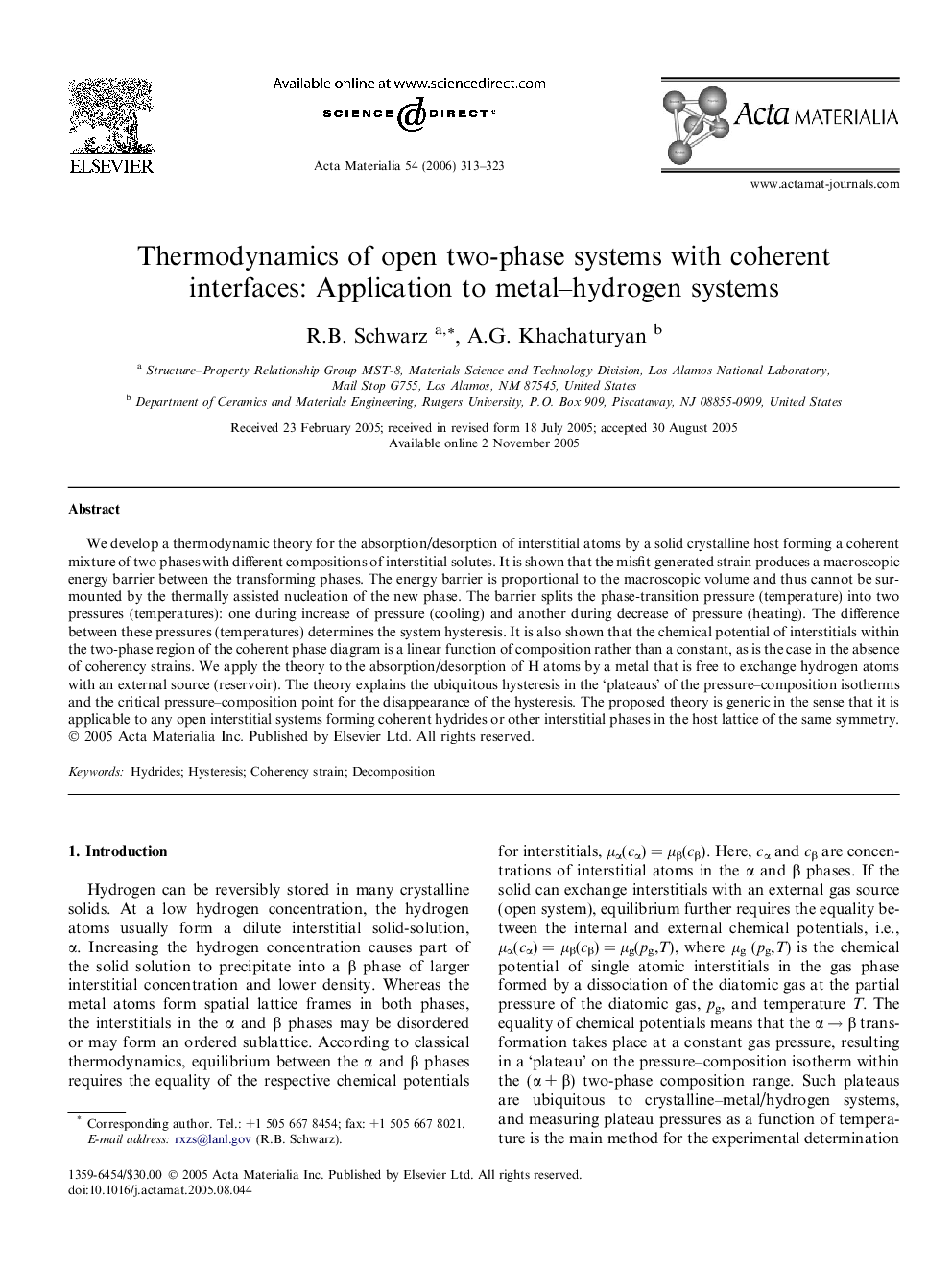| Article ID | Journal | Published Year | Pages | File Type |
|---|---|---|---|---|
| 1450831 | Acta Materialia | 2006 | 11 Pages |
We develop a thermodynamic theory for the absorption/desorption of interstitial atoms by a solid crystalline host forming a coherent mixture of two phases with different compositions of interstitial solutes. It is shown that the misfit-generated strain produces a macroscopic energy barrier between the transforming phases. The energy barrier is proportional to the macroscopic volume and thus cannot be surmounted by the thermally assisted nucleation of the new phase. The barrier splits the phase-transition pressure (temperature) into two pressures (temperatures): one during increase of pressure (cooling) and another during decrease of pressure (heating). The difference between these pressures (temperatures) determines the system hysteresis. It is also shown that the chemical potential of interstitials within the two-phase region of the coherent phase diagram is a linear function of composition rather than a constant, as is the case in the absence of coherency strains. We apply the theory to the absorption/desorption of H atoms by a metal that is free to exchange hydrogen atoms with an external source (reservoir). The theory explains the ubiquitous hysteresis in the ‘plateaus’ of the pressure–composition isotherms and the critical pressure–composition point for the disappearance of the hysteresis. The proposed theory is generic in the sense that it is applicable to any open interstitial systems forming coherent hydrides or other interstitial phases in the host lattice of the same symmetry.
